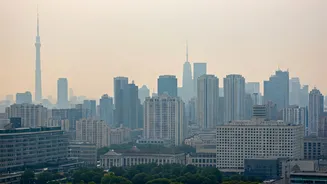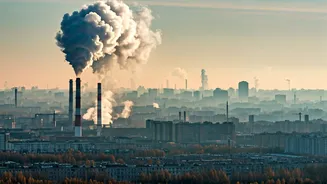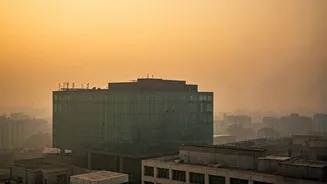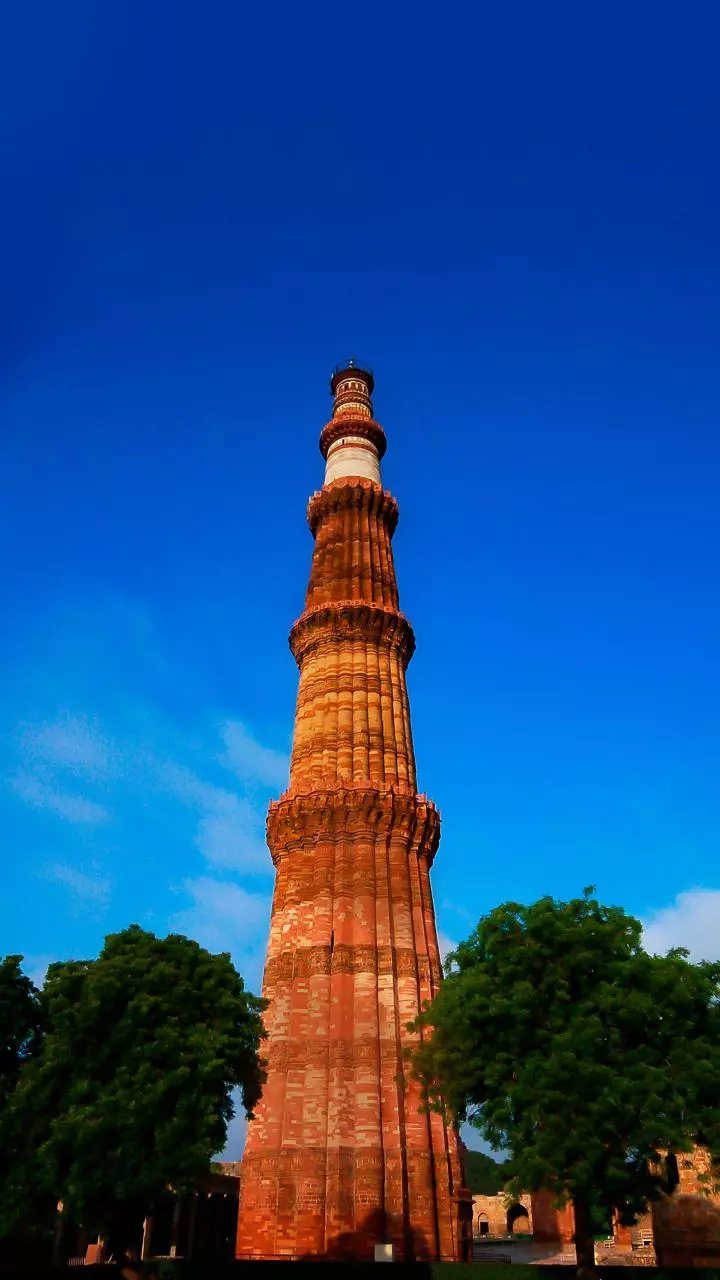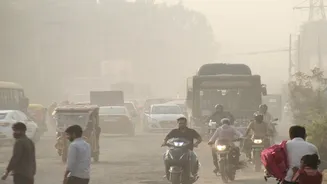Hazardous Air Quality
The air quality in Delhi has deteriorated significantly, reaching 'hazardous' levels. The AQI nearly touched 600, indicating an extremely polluted environment.
This situation poses considerable health risks for the residents of Delhi and surrounding areas. This is a crucial area of concern, demanding immediate attention and actionable solutions to mitigate the effects of the alarming air pollution levels. The consequences of such air quality can trigger respiratory ailments and worsen existing health conditions, making it vital to remain updated with current reports. In addition, the long term effects could possibly be damaging to the environment. The focus must be on prompt actions to safeguard public health and reduce the impacts of this hazardous situation.
Regional Impact Overview
The air quality crisis is not confined to Delhi alone; other cities in Haryana are also experiencing concerning levels of pollution. The impact of pollution extends beyond the capital, affecting the broader region. This underscores the need for regional strategies to address the issue. The combined effect of various sources, including farm fires and industrial emissions, has worsened air quality across the region. As the situation worsens, the need for integrated efforts becomes increasingly critical to minimize the effects. Furthermore, it is essential to focus on enhancing public awareness about the health hazards associated with the hazardous levels of air quality. The overall regional picture emphasizes the complexity and the magnitude of the problem.
Sources of Pollution
Several factors contribute to the deteriorating air quality in Delhi and its surrounding regions. Farm fires in Punjab have been identified as one major source of pollution, with smoke significantly affecting air quality. Additional sources include vehicular emissions and industrial activities. These various sources collectively contribute to the formation of pollutants, leading to a rise in AQI levels. Understanding the primary contributors to air pollution is crucial for the development of effective mitigation measures. The synergy of various pollution sources further complicates the management of air quality, requiring a multifaceted approach to comprehensively tackle the issue. Monitoring, controlling, and eventually reducing these pollution sources are important steps toward improving overall air quality.
Health Implications
The hazardous levels of air quality significantly impact public health. The high concentration of pollutants in the air causes respiratory problems and can exacerbate existing health conditions. This situation is particularly critical for vulnerable populations, including children, the elderly, and those with pre-existing illnesses. Extended exposure to polluted air carries significant health risks, underlining the need for immediate interventions. Protecting public health requires strict enforcement of air quality standards and public awareness campaigns. Furthermore, public health advisories become indispensable in situations with hazardous levels of air quality. These measures are designed to inform the public about the risks and provide essential preventive instructions.
Government Responses
The government is taking steps to tackle the issue of air pollution. The implementation of measures to control pollution sources and improve air quality is essential. Such strategies are intended to alleviate the negative consequences of air pollution and protect the population's health. Various strategies, from stricter emission standards to the promotion of cleaner fuels and transportation, are being implemented. These combined efforts aim to provide cleaner air and mitigate the effects of pollution. Furthermore, the effectiveness of these efforts is assessed through ongoing monitoring and assessment, allowing for adjustments as needed.
